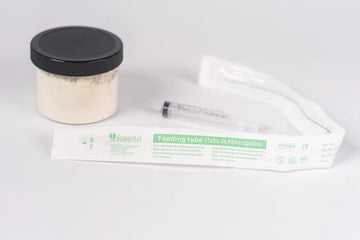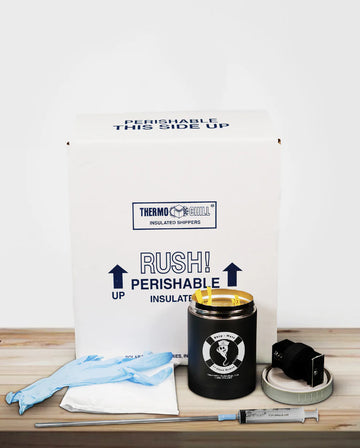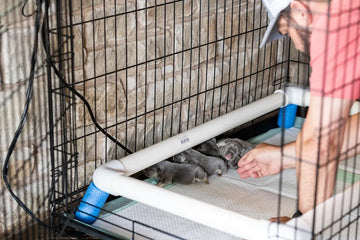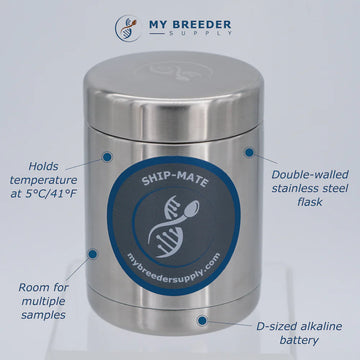
Caring for newborn puppies can sometimes be challenging, especially when they require extra help with feeding. A puppy tube feeding kit is a valuable tool for providing essential nutrition to puppies that are unable to nurse from their mother. In this article, we will guide you through the process of safely using a puppy tube feeding kit, so you can confidently care for these tiny, vulnerable creatures.
Why Use a Puppy Tube Feeding Kit?

There are several reasons why you might need to use a puppy tube feeding kit. These include:
Orphaned Puppies
If a mother dog is unable or unwilling to care for her puppies, or if she has passed away, tube feeding is necessary to ensure the puppies receive the nutrition they need.
Weak or Sick Puppies
Some puppies may have health issues or be too weak to nurse from their mother. Tube feeding can provide these puppies with the nourishment they need to regain strength and grow.
Large Litters
In cases where there are many puppies in a litter, it might be difficult for the mother to provide enough milk for all of them. Tube feeding can help supplement their diet and ensure they receive proper nutrition.
Preparing for Tube Feeding
Before you begin tube feeding, you'll need to:
Assemble the Necessary Supplies
Puppy tube feeding kit (including a feeding tube, syringe, and measuring tape)
- Puppy milk replacer formula
- Warm water or heating pad
- Clean towels
- Sterilization solution
- Latex or nitrile gloves
- Sterilize the Equipment
Thoroughly sterilize the feeding tube and syringe using sterilization solution or boiling water. Make sure to rinse the equipment with clean water afterward.
Prepare the Formula
Mix the puppy milk replacer formula according to the manufacturer's instructions. Ensure the formula is at room temperature or slightly warmer before feeding.
How to Properly Measure the Feeding Tube
To measure the feeding tube, place the tip of the tube at the puppy's nose and run it to their last rib. Mark this spot on the tube, as it indicates how far the tube should be inserted into the puppy's esophagus.
Step-by-Step Guide to Safely Tube Feed a Puppy
Step 1: Warm the Formula
Gently warm the formula to body temperature by placing the filled syringe in a cup of warm water for a few minutes. Test the formula's temperature on your wrist to ensure it's not too hot.
Step 2: Position the Puppy
Place the puppy on a clean towel on its stomach with its head slightly elevated. This position helps prevent choking and makes it easier to insert the feeding tube.
Step 3: Insert the Tube
With clean hands or while wearing gloves, gently open the puppy's mouth and insert the feeding tube. Ensure the tube passes down the esophagus, not the trachea, by feeling the tube as it goes down the throat. If you feel resistance, gently pull the tube back and try again. Once the tube is correctly placed, secure it at the pre-measured mark.
Step 4: Feed the Puppy
Slowly and gently depress the syringe's plunger, allowing the formula to flow into the puppy's stomach. Keep an eye on the puppy for any signs of distress or choking. If you notice any issues, stop feeding immediately and consult a veterinarian. After feeding, gently remove the tube from the puppy's throat.
Step 5: Clean Up and Aftercare
Clean the feeding tube and syringe with warm soapy water, then sterilize them for the next feeding session. Gently stimulate the puppy to encourage elimination by rubbing a warm, damp cloth on its genitals and anus. This mimics the mother's grooming and helps the puppy's digestive system function properly.
Tips for a Successful Tube Feeding Experience
- Always consult with a veterinarian before tube feeding a puppy, especially if you're inexperienced or unsure about the process.
- Monitor the puppy's weight and overall health to ensure they are receiving adequate nutrition.
- Feed the puppy according to a schedule based on their age and weight, as recommended by your veterinarian.
- Make sure the environment is warm, clean, and comfortable for the puppy during feeding sessions.
When to Seek Professional Help
If you encounter any of the following issues while tube feeding a puppy, consult a veterinarian immediately:
- Choking or gagging during feeding
- Consistent refusal to accept the feeding tube
- Persistent vomiting or diarrhea
- Lack of weight gain or failure to thrive
Tube feeding a puppy can be a delicate and challenging task, but with proper preparation and care, you can ensure the puppy receives the nutrition it needs to grow and thrive. Always consult a veterinarian if you're unsure about any aspect of the tube feeding process, and monitor the puppy's health and progress closely. With patience and practice, you'll soon become proficient in safely using a puppy tube feeding kit.
Additional Tips for Tube Feeding Success

Check the Tube Placement
Before feeding, it's crucial to check the tube's placement to ensure it's in the esophagus, not the trachea. To do this, you can gently draw back on the syringe. If you see air bubbles, the tube is likely in the trachea, and you should reposition it. Alternatively, you can also place your finger on the puppy's throat while inserting the tube; if you feel two tubes moving (the trachea and the feeding tube), the tube is not in the correct position.
Be Patient and Calm
Tube feeding can be stressful for both you and the puppy, so it's essential to stay calm and patient during the process. Speak to the puppy in a soothing voice and maintain a steady hand when inserting the tube and feeding. The more comfortable you are, the more at ease the puppy will be.
Monitor for Signs of Overfeeding
Overfeeding can lead to gastrointestinal issues and discomfort for the puppy. Monitor for signs of overfeeding, such as a distended belly, vomiting, or diarrhea. If you notice any of these symptoms, consult your veterinarian for guidance on adjusting the feeding amount or schedule.
My Breeder Supply: Your Source for Puppy Tube Feeding Kits
If you're in need of a high-quality puppy tube feeding kit, look no further than My Breeder Supply. They offer a comprehensive selection of products designed specifically for breeders and pet owners, including:
- Puppy tube feeding kits complete with feeding tubes, syringes, and measuring tapes
- Additional tools and accessories for puppy care, such as heating pads, whelping boxes, and nursing bottles
My Breeder Supply is dedicated to providing top-quality products and excellent customer service, ensuring you have everything you need to care for your puppies successfully. With their extensive range of supplies and expert guidance, you can confidently navigate the tube feeding process and provide your puppies with the best possible care. Visit our website to explore their product offerings and learn more about how My Breeder Supply can support your puppy care journey.
FAQs About Puppy Tube Feeding Kits
How often should I tube feed a puppy?
The feeding frequency depends on the puppy's age and weight. Generally, newborn puppies need to be fed every 2-3 hours, while older puppies may require less frequent feedings. Consult with a veterinarian for specific recommendations.
How much formula should I feed a puppy during each feeding session?
The amount of formula to feed depends on the puppy's age and weight. As a general guideline, feed approximately 1ml of formula per ounce of body weight during each feeding. Your veterinarian can provide more specific guidance based on your puppy's needs.
How long does it take for a puppy to learn to nurse from its mother after being tube-fed?
Some puppies may quickly transition to nursing from their mother once they regain strength, while others may take longer. Monitor the puppy closely and consult with a veterinarian for guidance on when and how to transition the puppy to nursing.
Can I use a human baby formula for tube feeding puppies?
No, human baby formula is not suitable for puppies, as it does not provide the necessary nutrients for their growth and development. Always use a commercially available puppy milk replacer formula specifically designed for puppies.
When can I start weaning a tube-fed puppy onto solid food?
Puppies can generally begin the weaning process around 3-4 weeks of age. However, the transition to solid food should be gradual and closely monitored. Start by offering a gruel made of puppy milk replacer and high-quality puppy food, and gradually increase the solid food content over time. Consult your veterinarian for specific guidance on when and how to wean your tube-fed puppy onto solid food.




